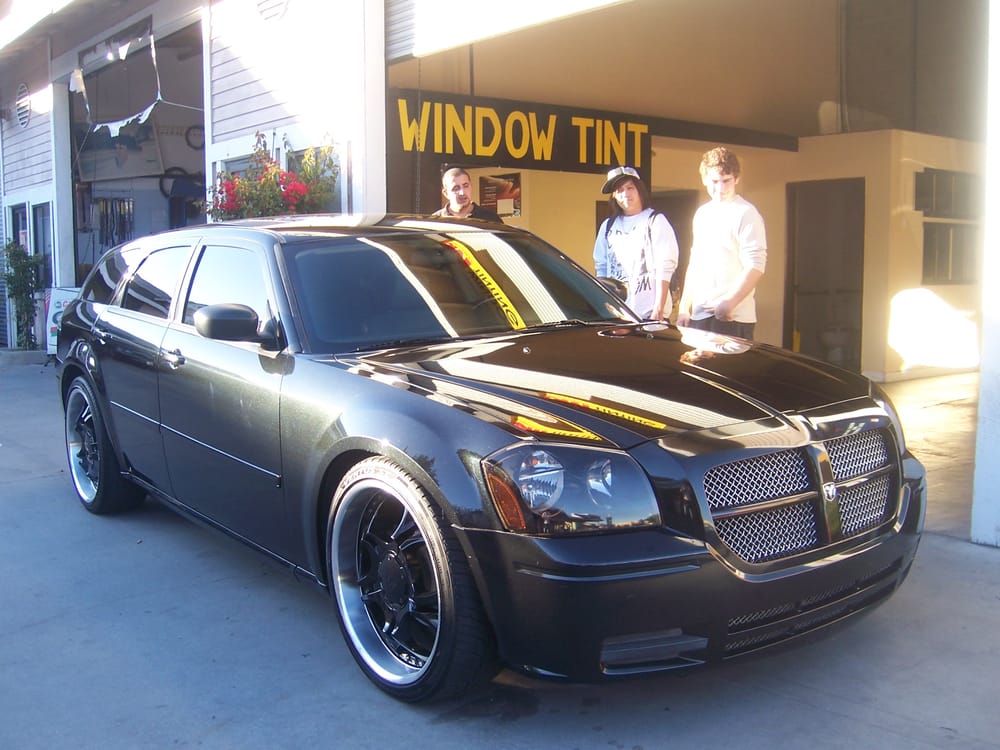
When contemplating the optimal tint for your auto tinting, it’s imperative to consider the distinctive characteristics and benefits of the various types available. Dyed window tints are economically advantageous, primarily offering glare reduction with minimal heat rejection. Conversely, metalized films enhance thermal insulation and UV protection, albeit with potential signal interference. Hybrid tints amalgamate the strengths of dyed and metalized layers, providing a synergistic solution. For the pinnacle of performance, ceramic tints deliver unparalleled heat rejection, UV defense, and signal clarity. Carbon films, with their non-reflective appearance, offer robust UV protection and an aesthetically pleasing finish. To navigate this complex landscape, consider factors such as climate, driving conditions, and legal stipulations.
Types of Auto Tint
Auto tinting, an essential aspect of vehicle customization and protection, encompasses various types of films, each designed to meet specific requirements and preferences. Primarily, the spectrum of auto tints includes dyed, metalized, hybrid, ceramic, and carbon films.
Dyed window tint, often the most economical, utilizes a dye layer to absorb solar radiation, reducing glare but offering limited heat rejection.
Metalized films incorporate metallic particles, enhancing heat rejection and UV protection. However, their reflective nature may interfere with electronic signals.
Hybrid tints combine dyed and metalized layers, providing a balanced approach with improved heat rejection and reduced signal interference.
Ceramic tinting represents the pinnacle of auto tint technology, using nano-ceramic particles. These films excel in heat rejection, UV protection, and maintaining signal clarity without compromising visibility. Although more expensive, ceramic tints are highly durable and resistant to fading.
Carbon films, characterized by their matte finish, offer superior UV protection and heat rejection without the interference issues of metalized tints. They provide a sophisticated, non-reflective look and maintain color stability over time.
Understanding these distinctions ensures that vehicle owners can make informed decisions, selecting the tint that best aligns with their functional and aesthetic needs.
Choosing the Right Tint
Selecting the appropriate tint for your vehicle hinges on a multitude of factors, each contributing to both functionality and aesthetics. To make an informed decision, one must consider variables such as the local climate, driving habits, and legal regulations.
For instance, ceramic tints offer superior infrared rejection and are highly recommended for those residing in warmer regions. This advanced technology not only minimizes heat penetration but also enhances UV protection, promoting comfort and safeguarding the interior.
Aesthetic preferences play a critical role as well. Dyed tints, known for their ability to provide a uniform, sleek appearance, might appeal to those prioritizing style over performance. Conversely, metalized tints, though effective in glare reduction and heat rejection, can interfere with electronic devices due to their metallic particles.
Moreover, understanding the Visible Light Transmission (VLT) rating is crucial. A lower VLT percentage means darker tint, impacting visibility and compliance with state-specific regulations. Legal stipulations vary significantly across jurisdictions, necessitating thorough research to avoid penalties.
Ultimately, the ideal tint harmonizes personal needs with legal requirements, ensuring optimal performance and visual appeal. Engaging a professional installer can further refine the selection process, leveraging their expertise to achieve the desired outcome.
In summation, selecting the optimal auto tinting necessitates a thorough understanding of the inherent properties of each type. From the economic practicality of dyed tints to the advanced technology of ceramic films, each option offers distinct advantages and trade-offs. The decision should be guided by an evaluation of environmental conditions, vehicular usage patterns, and regulatory considerations. As with the meticulous craftsmanship of a Renaissance artisan, the choice of tint should be both precise and informed, ensuring a harmonious blend of functionality and aesthetic elegance.